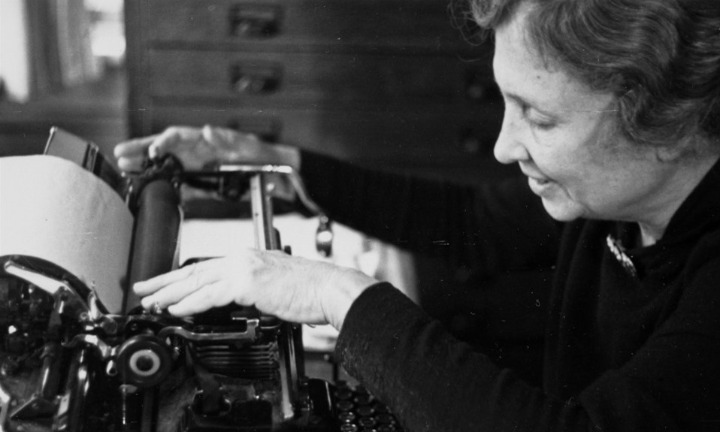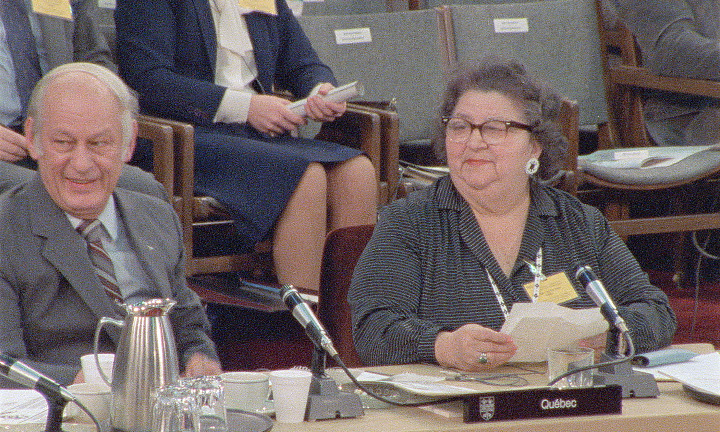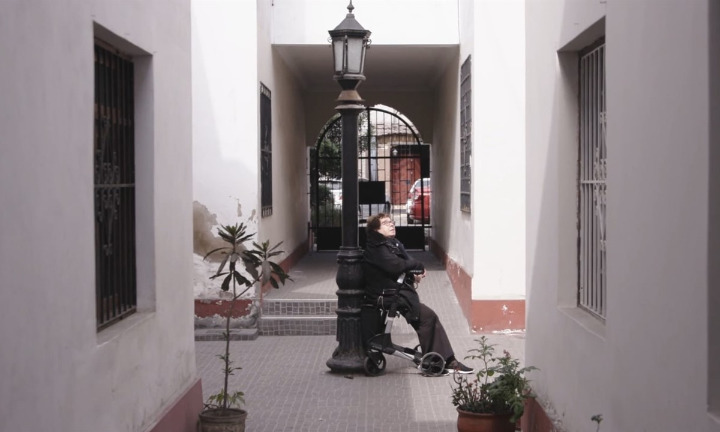It’s hard to believe how famous Helen Keller was during her life. She was a medical miracle: a deaf and blind woman who learned how to communicate so well that she enrolled at Radcliffe College (then the female section of Harvard) and excelled there. Keller became the first deafblind person to graduate a college anywhere in the world. She was, to say the least, one of the best “good news” stories of the early 20th century, when progress in science, industry and education was extolled everywhere. Keller became a symbol of that forward thinking, which so informed the U.S. in particular in the years preceding World War One.
Filmmaker and professor John Gianvito’s Her Socialist Smile, now in the Hot Docs essayistic program Markers, not only revives the legend of Helen Keller, but also goes one better, revealing that her thinking was quite radical—and that she wasn’t afraid to make her opinions known to the public that adored her. One of the biggest attractions on the lecture circuit, Keller became a famous speaker, working for the American Foundation for the Blind (AFB) for over 40 years. For the AFB, her talks were humanistic, mainly telling her own amazing life story, while advocating for the blind. But, as Gianvito shows in his film, she was also a member of the American Socialist Party and an acclaimed suffragette, advocate for equal rights for blacks and all of humanity (she joined the N.A.A.C.P.—the National Association for the Advancement of Colored People), an anti-militarist and speaker on behalf of the rights for labourers around the world.
Keller filled Carnegie Hall in New York in 1916 to denounce the growing militancy in the U.S.: she rightly feared that President Woodrow Wilson would lead the country into war, which, indeed, he did. By then, Keller was even finding the Socialists too mainstream so she made a point of extolling the IWW (Industrial Workers of the World), the most radical union in North America, which was considered to be anarchistic; the Wobblies—their nickname—believed in industrial democracy with labourers becoming the leading figures in a far more equitable economic system. Despite her known radicalism, Keller proved to be impregnable to attacks on her from conservative elements in the U.S. and abroad—her books were burned by the Nazis—and she remained an active force for good throughout her long life (she died in 1968).
Gianvito’s film not only reclaims Keller’s life, but it also shatters boundaries as a film essay. While the film does keep to a basic chronological structure, it is structured in ways intended to make the viewer think about what they’re seeing. Since Keller was a fine writer, huge swaths of text appears on the screen, mainly from the radical speeches she made during the 1910s. In sharp contrast, there are beatific scenes in the woods, and it’s only towards the end of the film that one realizes that Keller loved to walk with her companions in just that kind of terrain; it conferred a kind of peace on her. Then, to show off Keller’s dramatic flair, there are scenes placed in empty theatres where we read her wise one-liners like “The place between your comfort zone and your dreams is where life takes place.” Finally, we’re offered different contexts for Keller’s life and philosophy including some historic shots of her and the era around World War One to a fascinating speech attacking Lenin as not being a true socialist by Noam Chomsky. (One can imagine Chomsky and Keller getting along just fine.)
If Keller is known at all today, it’s for the play and Oscar winning film The Miracle Worker, which told the story of her intellectual breakthrough as a child due to the skilled help of her trained companion, Anne Sullivan. It would be wonderful if Helen Keller did become more popular today, particularly if her radical ideas were read and made fresh to a new generation.
Her Socialist Smile screens at Hot Docs 2021.
Visit the POV Hot Docs Hub for more coverage from this year’s festival.












